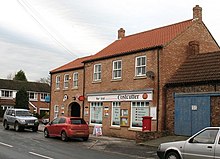
Wetherby is a market town and civil parish in the City of Leeds district, West Yorkshire, England, close to West Yorkshire county's border with North Yorkshire, and lies approximately 12 miles from Leeds City Centre, 12 mi (19 km) from York and 8 mi (13 km) from Harrogate. The town stands on the River Wharfe, and for centuries has been a crossing place and staging post on the Great North Road midway between London and Edinburgh.

Acaster Malbis is a village and civil parish in the unitary authority of the City of York, England. It is located on the River Ouse, almost 5 miles (8 km) south of York. Nearby are the villages of Copmanthorpe 2 miles (3.2 km) to the north-west, Bishopthorpe 2 miles to the north and Appleton Roebuck 3.5 miles (6 km) to the south-west. The parish covers an area of about 2,000 acres (8.1 km2).
The Ainsty or the Ainsty of York was a historic district of Yorkshire, England, west of the city of York. Originally a wapentake or subdivision of the West Riding of Yorkshire it later had a unique status as a rural area controlled by the corporation of the city.
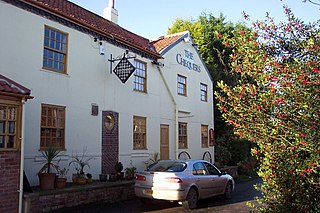
Bilton-in-Ainsty is a village in the Harrogate district of North Yorkshire in England. It lies about 4 miles (6 km) east of Wetherby and 8 miles (13 km) west of York. It is part of the civil parish of Bilton-in-Ainsty with Bickerton. Bilton had a population of 147 in 2006.

Bramham is a village in the civil parish of Bramham cum Oglethorpe in the City of Leeds metropolitan borough, West Yorkshire, England.
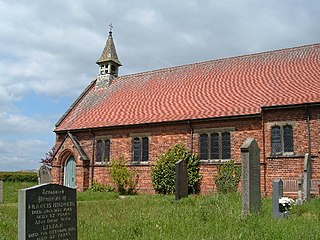
Hessay is a village and civil parish in the unitary authority area of the City of York, in the ceremonial county of North Yorkshire, England 4.7 miles (7.5 km) west of York.
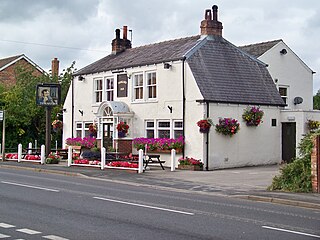
Rufforth is a village in the unitary authority of the City of York in North Yorkshire, England. It lies about 4 miles (6.4 km) west of York. The village is mentioned in the Domesday Book and dates from Saxon times.
Barkston Ash was a parliamentary constituency centred on the village of Barkston Ash in the West Riding of Yorkshire. It was represented in the House of Commons of the Parliament of the United Kingdom from 1885 until 1983. It elected one Member of Parliament (MP) by the first past the post system of election.

Killinghall is a village and civil parish in the Harrogate district of North Yorkshire, England. The civil parish population taken at the 2011 census was 4,132.
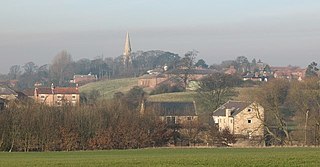
Hunsingore is a village and civil parish in the Harrogate district of North Yorkshire, England. It is situated near the River Nidd and the A1(M) motorway, about 14 miles (23 km) west of York, and 4 miles (6.4 km) north east of Wetherby.

Kirk Deighton is a village and civil parish in the Harrogate district of North Yorkshire, England. It is situated north-west of Wetherby, to which it is contiguous, and near the A1(M). The village was in the West Riding of Yorkshire, and Wetherby Rural District, until 1974, and is now on the border between West Yorkshire and North Yorkshire: the village is in North Yorkshire, and Wetherby in the Leeds metropolitan district of West Yorkshire. Kirk Deighton has a population of less than 500 people, measured at 484 in the 2011 Census.
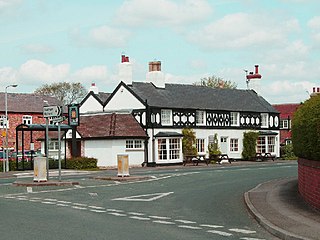
Long Marston is a village and civil parish in the Harrogate district of North Yorkshire, England. Historically part of the West Riding of Yorkshire, it is situated on the B1224 road from Wetherby to York, 7 miles (11 km) west of York. The civil parish includes the hamlets of Hutton Wandesley, immediately south of the village of Long Marston, and Angram, 1.5 miles (2.4 km) south east of Hutton Wandesley.
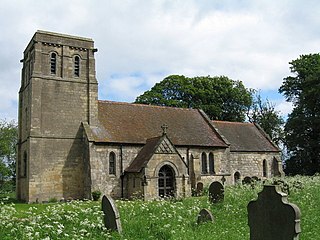
Moor Monkton is a village and civil parish in the former Harrogate District of North Yorkshire, England. It is situated on the River Nidd and 7 miles (11 km) north-west from York city centre.

North Deighton is a village and civil parish in the Harrogate district of North Yorkshire, England. Until 1866, when it became its own parish, the village was part of the parish of Kirk Deighton. The population of the civil parish as taken at the 2011 Census was less than 100. Details are included in the civil parish of Little Ribston, however, North Yorkshire County Council estimated the population in 2014 as having dropped to 80.

Harrogate (Stonefall) Cemetery is a Commonwealth War Graves Commission (CWGC) burial ground for the dead of the First World War and Second World War located on the outskirts of Harrogate in North Yorkshire, England.
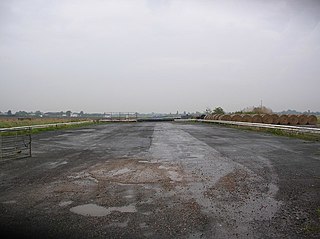
RAF Marston Moor was a Royal Air Force airfield at Tockwith, North Yorkshire, during the Second World War. It was originally called RAF Tockwith, but confusion with RAF Topcliffe led to the name change.

Cowthorpe is a village in the Harrogate district of North Yorkshire, England. It is situated 3 miles (4.8 km) north of Wetherby, 10 miles (16 km) east of Harrogate, 7 miles (11 km) from Knaresborough and 13.5 miles (21.7 km) from York.

Harrogate Coach Travel operates local and regional bus services in North Yorkshire and West Yorkshire, England.
Albert Edward Bonass was an English footballer who scored 58 goals from 186 appearances in the Football League playing as an outside left for Darlington, York City, Hartlepools United and Chesterfield.
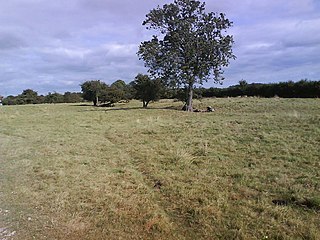
Wilstrop is a civil parish about 8 miles (13 km) west of York, in the Harrogate district, in the county of North Yorkshire, England. In 2001 the parish had a population of 44, and in 2015 the population was estimated at 60. There is no modern village in the parish. The site of the deserted medieval village of Wilstrop lies near the River Nidd on the northern boundary of the parish.


